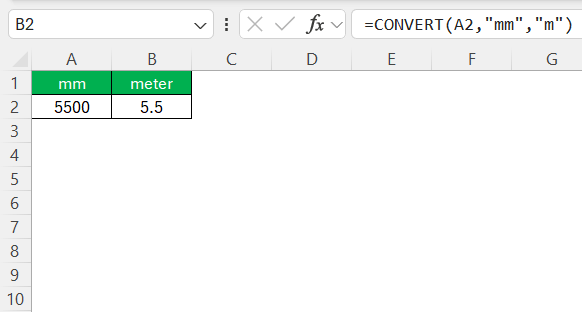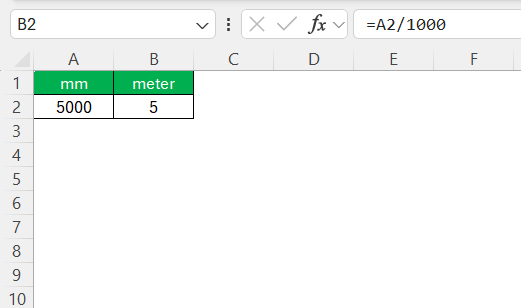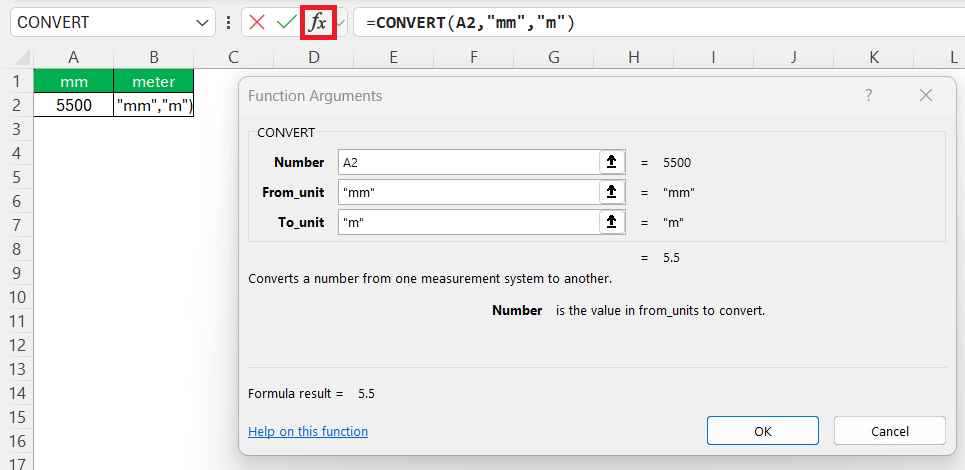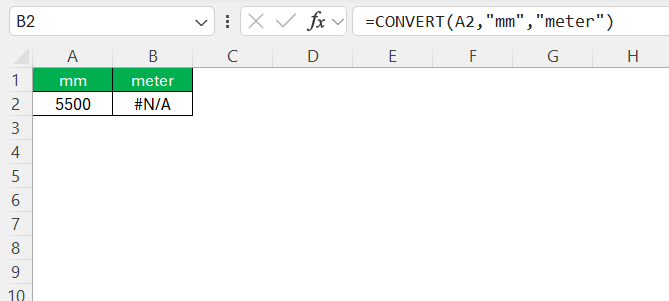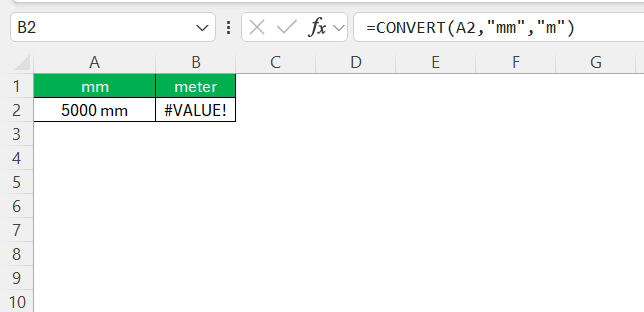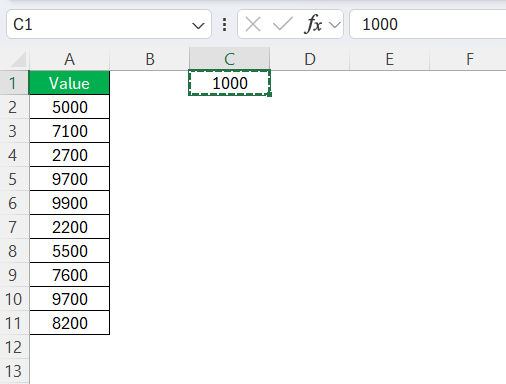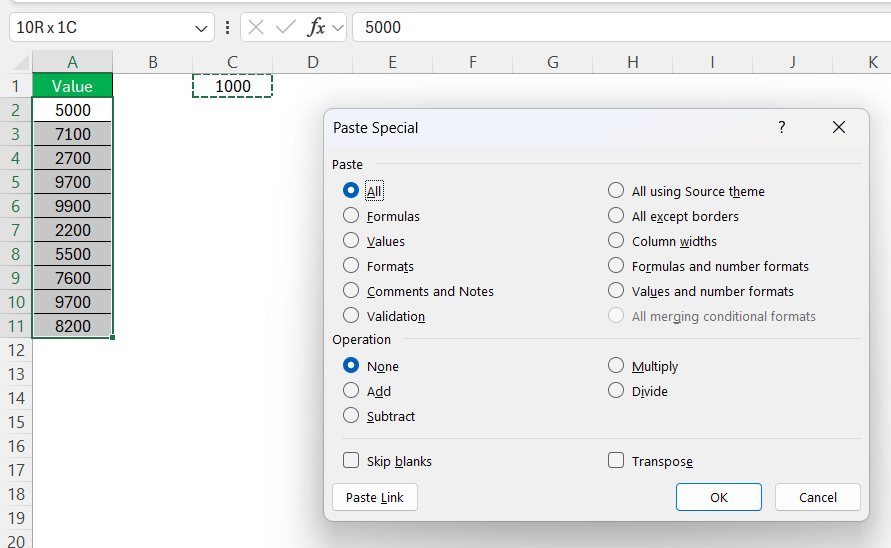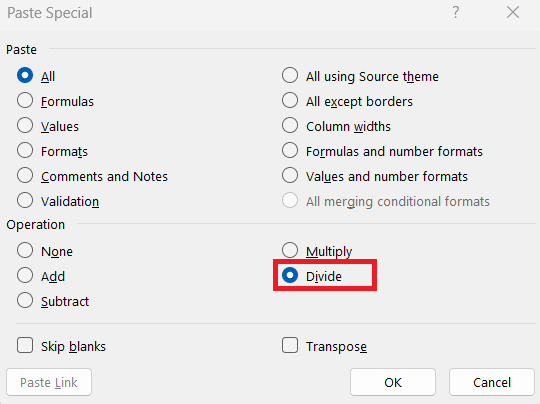When tackling tasks that require precision, like converting mm to meter in Excel, I find it crucial to utilize Excel’s powerful functions accurately. Excel serves as an invaluable tool for unit conversion, helping me maintain efficiency and precision in my data work. By understanding its conversion capabilities, we can streamline our workflow and avoid costly errors associated with manual calculations.
Key Takeaways:
- Use =CONVERT(number, “mm”, “m”) for precise unit changes in Excel.
- Divide millimeters by 1,000 to convert manually to meters.
- Excel’s Formula Builder simplifies conversion syntax and reduces errors.
- Always check unit codes and ensure the input is numeric, not text.
- VBA scripts and Paste Special make bulk conversions lightning-fast.
Table of Contents
Understanding the Basics of Unit Conversion in Excel
Overview of the CONVERT Function
The CONVERT function in Excel is an essential tool that allows me to easily change a number from one measurement unit to another. This function is versatile, supporting a wide range of units, including length, weight, temperature, and more. When converting mm to meter, I utilize the syntax =CONVERT(number, "mm", "m"). Here, “number” represents the cell reference or the amount I want to convert. This straightforward approach helps me avoid complex calculations, ensuring accurate conversions with minimal effort.
Importance of Accurate Measurement
Accurate measurement is foundational in both personal and professional contexts. It ensures reliability and consistency, which are crucial for making informed decisions. For instance, in engineering and construction, precise measurements can prevent costly errors and structural failures. In fields like science and research, accurate data is vital for experiments and conclusions. By using Excel’s functions, I can achieve precise conversions, minimizing human error and enhancing the credibility of my data.
Step-by-Step Process to Convert MM to Meter
Using the CONVERT Function
Utilizing the CONVERT function in Excel allows me to seamlessly transform mm to meter, which is particularly useful in scenarios that require metric conversions. To begin, I open my spreadsheet and identify the cell containing the millimeter value I need to convert. I then enter the formula =CONVERT(cell, "mm", "m"), replacing “cell” with the actual reference, like A2.
This function automatically updates the cell’s value to meters, saving me from manual calculations and ensuring the conversion is exact. It provides an efficient way for me to manage data that involves multiple unit types effortlessly.
Manual Conversion Techniques
While the CONVERT function is incredibly useful, sometimes I may find myself needing to convert millimeters to meters manually, especially if working without Excel’s built-in tools. The manual process is straightforward: divide the millimeter value by 1,000, as there are 1,000 millimeters in a meter.
For example, to convert 5,000 mm to meters, I simply calculate (5000/1000 ), which equals 5 meters.
This method, although simple, requires careful attention to detail to ensure I maintain accuracy and consistency across my dataset.
Tips and Tricks for Efficient Conversion
Streamlining with Formula Builder
Excel’s Formula Builder can significantly streamline the conversion process by providing an intuitive interface to construct formulas without error. When I use the Formula Builder, I can easily select and implement functions like CONVERT directly from the menu, which displays all necessary components and syntax examples.
This tool offers dropdowns to specify source and target units, minimizing input errors. Moreover, it provides real-time feedback on formula correctness, ensuring that every conversion I perform is accurate and efficient, which simplifies managing large datasets or complex workbooks.
Avoiding Common Mistakes
Even with Excel’s powerful tools, common mistakes can still happen, but being aware of them helps me avoid pitfalls. One frequent issue is using incorrect unit symbols in the CONVERT function; for precise conversion from mm to meter, I always double-check that I’ve typed “mm” and “m” accurately.
Another common error is applying the conversion formula to cells containing text or non-numeric values, which can cause formula errors.
Additionally, mixing measurement systems or mismatching units could lead to inaccurate data outcomes, so I constantly ensure consistency in unit usage across my spreadsheet to keep results reliable.
Leveraging Keyboard Shortcuts for Faster Workflow
Keyboard shortcuts can greatly enhance my efficiency when working in Excel, especially for tasks like unit conversion. By familiarizing myself with a few key shortcuts, I can navigate and execute commands quickly. For instance, I use Ctrl + A to select all data in a worksheet and Ctrl + C to copy values.
To quickly access the formula bar, F2 allows me to edit the active cell directly, and Ctrl + V pastes the converted results where needed. By employing these shortcuts, I find that my workflow becomes significantly smoother and more productive, saving time on repetitive actions.
Advanced Techniques for Conversion Automation
Applying VBA for Bulk Conversion
When dealing with large datasets, utilizing Visual Basic for Applications (VBA) for bulk conversion can be a tremendous time-saver. By writing a simple VBA script, I can automate the process of converting mm to meter across numerous cells. For instance, I can create a macro that loops through selected cells, applies the conversion by dividing each millimeter value by 1,000, and outputs the result in the corresponding cell.
This automation allows me to handle thousands of conversions at once, ensuring consistency and accuracy without the need for manual input in each cell. Using VBA, I can customize the code further based on specific dataset needs or integrate additional functions to enhance the overall efficiency of the task.
Optimizing with Paste Special
Using the Paste Special feature in Excel is another effective way to optimize the conversion workflow. When I need to apply a manual division across multiple cells, Paste Special allows me to perform operations like multiplication or division on selected data without altering the original values manually. For converting millimeters to meters, I first enter 1,000 in an empty cell and copy it.
Next, I select the millimeter data range and use Ctrl + Alt + V to invoke Paste Special.
Choosing the “Divide” operation in this menu applies the division across all selected cells in one go.
This method simplifies batch conversion and ensures uniformity across datasets, especially when handling extensive data ranges that would be cumbersome to convert individually. By utilizing Paste Special, I can maintain data integrity while executing conversions efficiently.
Real-Life Applications and Examples
Practical Scenarios for Business Use
In business contexts, converting units accurately is crucial for applications like inventory management, manufacturing, and logistics. For instance, when calculating material requirements, I can use Excel to ensure materials measured in millimeters convert seamlessly to meters for aggregate metrics. This precise conversion helps me optimize supply chain processes by aligning component measurements with production specifications, reducing waste, and improving cost efficiency.
Additionally, maintaining a consistent unit measurement across spreadsheets facilitates clearer communication among teams, suppliers, and clients involved in project planning and execution. By streamlining conversions, I support informed decision-making processes and enhance operational effectiveness.
Educational Contexts for Students and Teachers
In educational settings, Excel’s conversion tools provide an excellent opportunity for both teaching and learning measurement concepts. Students can use Excel to understand unit conversions by experimenting with data and seeing real-time results, which reinforces their grasp of mathematical principles. Teachers can create assignments that require conversions from mm to meter, helping students practice and apply their knowledge in a practical context.
By integrating Excel into the curriculum, I encourage critical thinking and problem-solving skills among students, preparing them for future academic and professional challenges that involve data manipulation and analysis. This hands-on approach not only makes learning engaging but also equips students with valuable technological skills.
FAQs
How do I convert mm to meter using Excel?
To convert mm to meter in Excel, use the CONVERT function: =CONVERT(A1, “mm”, “m”), where A1 contains the value in mm. Excel will automatically calculate the equivalent value in meters. This is an accurate and efficient method that avoids manual errors. It works best when dealing with consistent and numeric data.
What if the CONVERT function is not available in my Excel version?
If your Excel version doesn’t support the CONVERT function, you can perform the conversion manually. Simply divide the value in millimeters by 1,000 using a formula like =A1/1000. This gives you the value in meters. Be cautious to use consistent formatting and apply this method only to numeric cells.
Why is my CONVERT formula showing an error?
This usually happens when there’s a typo in the unit codes (e.g., using “meter” instead of “m”) or the referenced cell contains text or a blank. Double-check that you’re using the correct syntax—=CONVERT(value, “mm”, “m”). Also, ensure your input cell contains a number. If you’re still seeing issues, try checking your regional settings or Excel version compatibility.
Can I use Excel to convert multiple values at once?
Yes! Excel allows you to drag the formula down a column to convert multiple mm values to meters in one go. For more advanced needs, you can use VBA macros to automate bulk conversions across large datasets. Another quick method is using Paste Special > Divide to apply a division by 1,000 to all selected cells at once.
What are the common mistakes when converting units in Excel?
The most frequent mistakes include: typing incorrect unit codes, using formulas on non-numeric cells, and inconsistent units in large data ranges. Always verify you’re converting between compatible units, and use Excel’s Formula Builder or Help to ensure correct syntax. It’s also wise to test your formula on a few values before applying it broadly.
John Michaloudis is a former accountant and finance analyst at General Electric, a Microsoft MVP since 2020, an Amazon #1 bestselling author of 4 Microsoft Excel books and teacher of Microsoft Excel & Office over at his flagship MyExcelOnline Academy Online Course.

